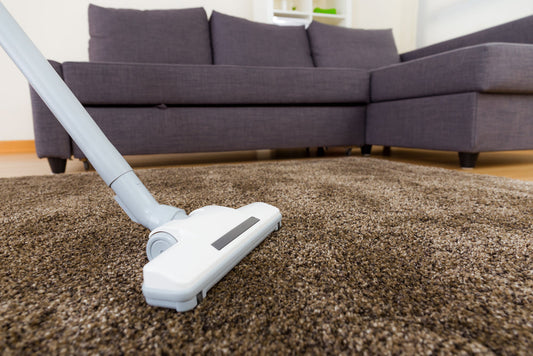
Tufting Troubleshooting Guide. Solving the most common technical issues
Share
Tufting is incredibly rewarding when everything runs smoothly. But as every creative tufting soul quickly learns, things don’t always go as planned. Machines beep, cloth tears, yarn refuses to stay in place… and suddenly your fun DIY project feels more like mechanical engineering.
No stress. We’ve gathered the most common technical tufting issues and how to fix them.
Let’s dive in.
The scissors aren’t cutting properly
Your gun is punching away, but the yarn stays looped instead of being cut. Possible causes:
- Dull scissors – Blades wear out over time. Sharpen or replace them.
- Yarn too thick – Dense or fluffy yarn may exceed your current scissor setup.
- Low tension – If the yarn isn’t tight, the blades can’t grip and cut effectively.
- Technique – Keep the foot pressed firmly against the cloth and move at a steady pace.
- Maintenance – Clean the gun regularly to prevent yarn buildup from blocking the scissors.
👉 Still no luck? Test your scissors manually by turning the gear by hand. If it doesn’t close cleanly, realignment or replacement may be needed. This video shows how to adjust the scissor opener and closer.
The machine is making holes in the cloth
This usually means one of two things:
- Cloth isn’t stretched tight enough – It should be drum-tight; slack lets the needle punch too deep.
- Foot out of position – When the needle is at its highest point, the foot should be just below the needle hole. Adjust the height if necessary.
The machine is beeping or won’t move
Annoying, but usually fixable:
- Beeping noise – Often means the gun needs oil. Add 3–5 drops of machine oil into the four oil holes and rotate the gear by hand to spread it.
-
Still beeping and won’t move – Possible reasons:
- Tufting over an already-tufted area
- Using very thick yarn
- Yarn jam in the wheel (unplug the machine and check)
If beeping continues, it could be a motor issue. Send us a video so we can hear it and help further.
The yarn won’t stay in the cloth
Often caused by yarn or needle issues:
- Yarn too thin – Double up strands or use thicker yarn.
- Foot positioning wrong – The foot should sit almost against the bottom of the needle hole when fully raised; too far and the yarn won’t embed properly.
The back stitch is uneven or inconsistent
If your tufted lines look messy from behind, check:
- Yarn tension – Ensure smooth feeding without snags.
- Pile height consistency – If adjusted mid-project, realign the scissor and opener.
- Speed and pressure – Stay steady; too fast or too light disrupts loops.
- Needle – Check for blockages or damage.
- Backing cloth – Sagging or wrinkles affect stitch quality.
- Pusher position – If loops appear on the back, move the pusher forward 1–2mm.
My machine won’t turn on
Check the basics:
- Power adapter light is on
- Cables are connected securely
- Switch works (toggle a few times to confirm)
Still nothing? Contact us and we’ll guide you step-by-step.
Bonus: The yarn keeps breaking
Classic problem—likely causes:
- Low-quality or weak yarn
- Feed path too tight
- Inconsistent tension
Ensure the yarn glides freely from cone to gun for smoother tufting.
Still stuck?
We’ve got your back. Whether it’s scissors, settings, or a strange noise, we’ve probably seen it before. Email us at info@tuftingshop.com with a clear description and a video if possible. And yes—if you need fresh yarn, you know where to find it 😉






